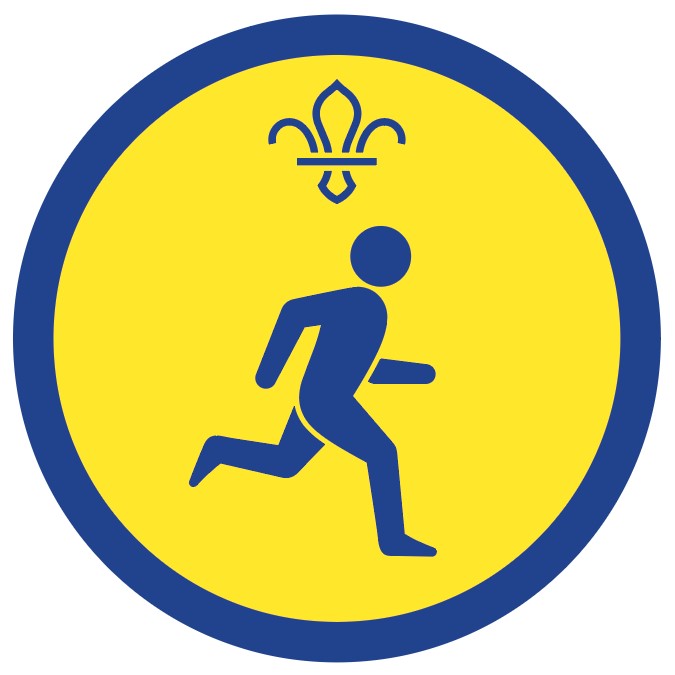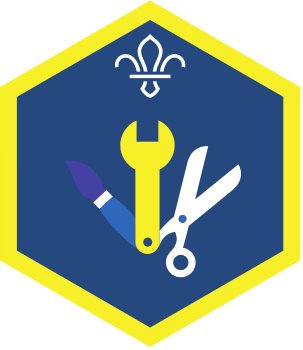
Cup it up
You’ll need
- Paper cups
- Coloured pens or pencils
- String
- Scissors
- Aluminium foil
- Sticky tape
Before you begin
- This is a great activity to run during an online session. Check out the advice on using Zoom and other popular digital platforms and the guidance on being safe online.
- Let everyone know what you’ll be doing in advance, send them the link to this activity, and ask them have the webpage open. They might be able to print a copy of the instructions to use too. Explain that parents and carers may need to help their young person with this activity.
- Think about how you’ll make sure everyone has the equipment they’ll need. You know your group best: some people have been dropping equipment packs at people’s doors while others have been sending links to buy things online. Don’t forget you’ll need some too so you can show everyone what to do.
Run the activity
- The person leading the activity should welcome everyone to the online meeting and mute them.
- Everyone should show that they have their paper cup, pens, string, scissors, aluminium foil, sticky tape and a pencil ready to go.
If you don’t have a paper cup, you could use an empty yoghurt pot, cardboard toilet roll tube or craft one out of newspaper. Lovely Greens have a handy video on how to fold paper into a pot.
- The person leading the activity should show everyone how to complete each step of the instructions to make their cup and ball game. They should remind everyone that they can look at the webpage to help them.
Try to do each step so it’s on camera. Give everyone time to copy and catch up before you move on to the next step.
Craft a cup and ball game
- Decorate the paper cup using pens or any other craft materials you have.
Why not theme your design to tennis? You could draw rackets, balls, and a net on the cup.
- Carefully cut a length of string and tie a knot at one end.
The longer the string, the more difficult the game will be.
- Scrunch and roll some aluminium foil around the knot to create a sphere that’s about the size of a ping pong ball.
A larger ball will make the game easier and a smaller ball will make it trickier. You may want to seal the ball with some sticky tape to make sure it stays attached.
- Use the top of a pencil to carefully pierce a hole in the middle of the bottom of the cup.
You may need to use scissors to make the hole if the paper cup is too thick.
- Push the pencil through the hole and attach it in place with some sticky tape. There should be a few centimetres of pencil inside the cup; the rest should stick out of the bottom to act like a handle.
- Tie the end of string around the top of the pencil inside the cup and secure it with sticky tape.
Practice makes perfect
- Everyone should take it in turns to show off their game. People could talk about how they decorated their game or how they decided how long to make their string.
- The person leading the game should count down from three.
- Everyone should begin trying to catch the aluminium ball in the cup using their dominant hand.
- Everyone should keep playing until they miss a catch. When they miss a catch, they should put their game down. The winner is the last person playing.
- Everyone should play again using their non-dominant hand.
- Everyone should work together to choose a challenge they can work on at home. How many times do they think they can catch it successfully in a row? How many times can they work towards? Do they want to set different goals for their dominant and non-dominant hands?
- In the next session, the person leading the activity should give everyone the change to show off their improvement and choose a new challenge to work on.
Reflection
Hand-eye coordination (using what your eyes see to guide how your hands move) is an important skill in tennis and many other sports. How did the game help everyone practise their hand-eye coordination? People could think about how they had to watch the ball to know how and where to move the cup.
Can anyone think of other hand-eye coordination activities they can do using items they have at home? People might suggest juggling, or using chalk or tape to mark targets that they can try to hit with soft objects that won’t leave a mark (like aluminium foil balls or pom poms).
Safety
All activities must be safely managed. You must complete a thorough risk assessment and take appropriate steps to reduce risk. Use the safety checklist to help you plan and risk assess your activity. Always get approval for the activity, and have suitable supervision and an InTouch process.
- Scissors
Supervise young people appropriately when they’re using scissors. Store all sharp objects securely, out of the reach of young people.
- Everyone can choose the length of their string and the size of their ball. People could also vary the material they use to make their ball, for example, they could try using a large pom pom, a wooden bead, or a ping pong ball.
- You don’t have to make your practice competitive. Everyone could keep playing and try to beat their own records.
Some people may find it easier catch a brightly coloured ball in their cup.
All Scout activities should be inclusive and accessible.
Put your newfound hand-eye coordination skills to the test with a tennis racket. Hold a tennis racket face-up in your dominant hand – like you were holding a frying pan, about to flip a pancake in it. Place a tennis ball on the strings of the racket, and then slowly move the racket up and down until the ball begins to bounce. See how many times you can bounce the ball on your racket in a row.

